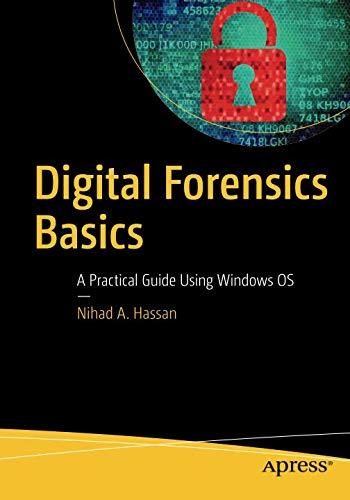

Most ebook files are in PDF format, so you can easily read them using various software such as Foxit Reader or directly on the Google Chrome browser.
Some ebook files are released by publishers in other formats such as .awz, .mobi, .epub, .fb2, etc. You may need to install specific software to read these formats on mobile/PC, such as Calibre.
Please read the tutorial at this link: https://ebookbell.com/faq
We offer FREE conversion to the popular formats you request; however, this may take some time. Therefore, right after payment, please email us, and we will try to provide the service as quickly as possible.
For some exceptional file formats or broken links (if any), please refrain from opening any disputes. Instead, email us first, and we will try to assist within a maximum of 6 hours.
EbookBell Team

4.1
90 reviewsDirected toward users with no experience in the digital forensics field, this book provides guidelines and best practices when conducting investigations as well as teaching you how to use a variety of tools to investigate computer crime. You will be prepared to handle problems such as law violations, industrial espionage, and use of company resources for private use.
Digital Forensics Basics is written as a series of tutorials with each task demonstrating how to use a specific computer forensics tool or technique. Practical information is provided and users can read a task and then implement it directly on their devices. Some theoretical information is presented to define terms used in each technique and for users with varying IT skills.
What You’ll Learn
Assemble computer forensics lab requirements, including workstations, tools, and more
Document the digital crime scene, including preparing a sample chain of custody form
Differentiate between law enforcement agency and corporate investigations
Gather intelligence using OSINT sources
Acquire and analyze digital evidence
Conduct in-depth forensic analysis of Windows operating systems covering Windows 10–specific feature forensics
Utilize anti-forensic techniques, including steganography, data destruction techniques, encryption, and anonymity techniques
Who This Book Is For
Police and other law enforcement personnel, judges (with no technical background), corporate and nonprofit management, IT specialists and computer security professionals, incident response team members, IT military and intelligence services officers, system administrators, e-business